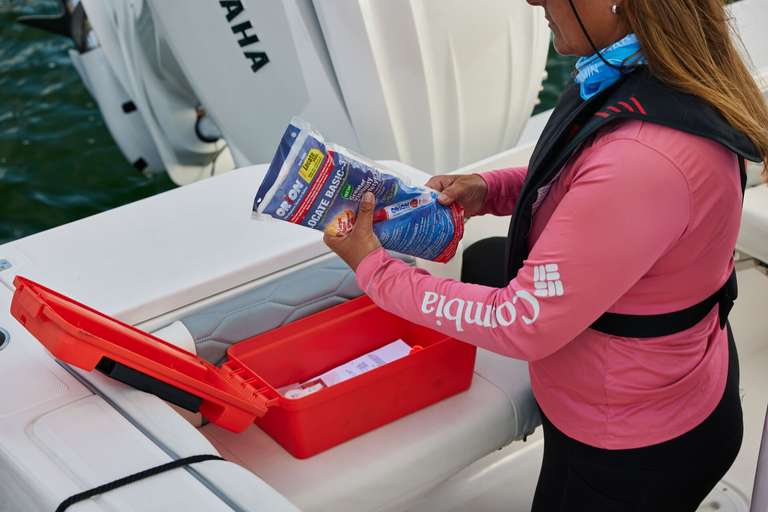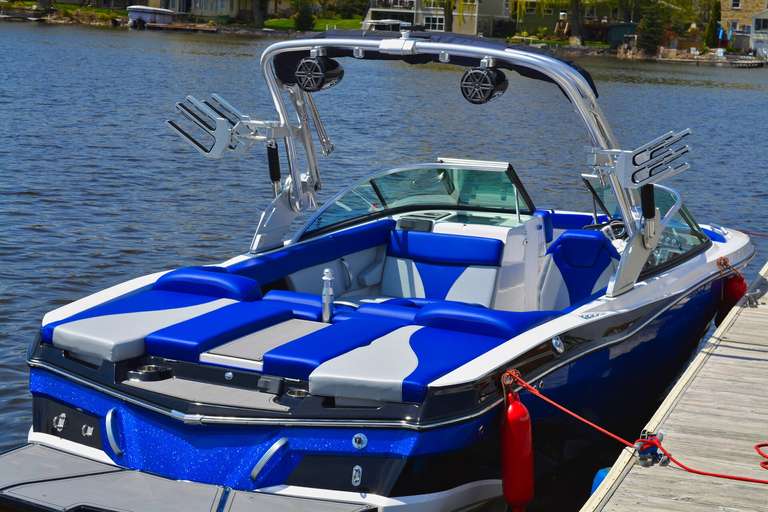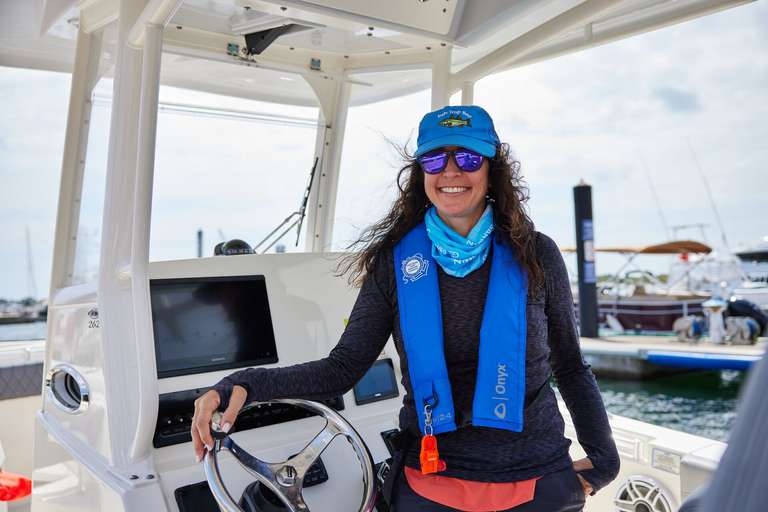Types of Life Vests (and Why We Wear Them)
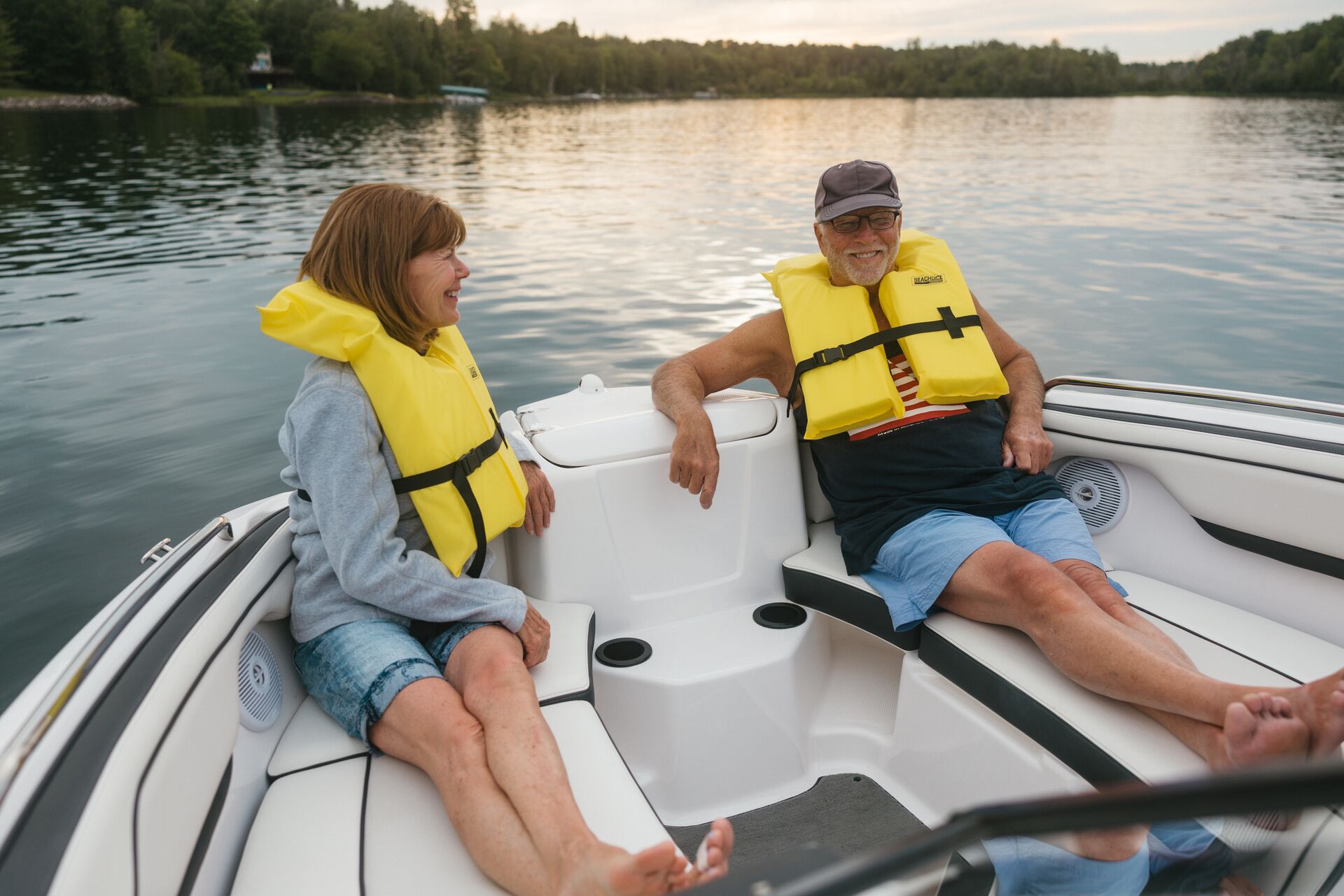
Personal flotation devices (PFDs), also known as life jackets, save lives.
It's as simple as that.
Saving lives on the water is why we wear life vests or jackets — but what type of PFD do you need? There are five different types, and each one is ideal for specific uses to offer the wearer the best opportunities to avoid drowning depending on the water activities they're engaged in.
Today, we cover the types of life jackets and when to choose each one for water fun!
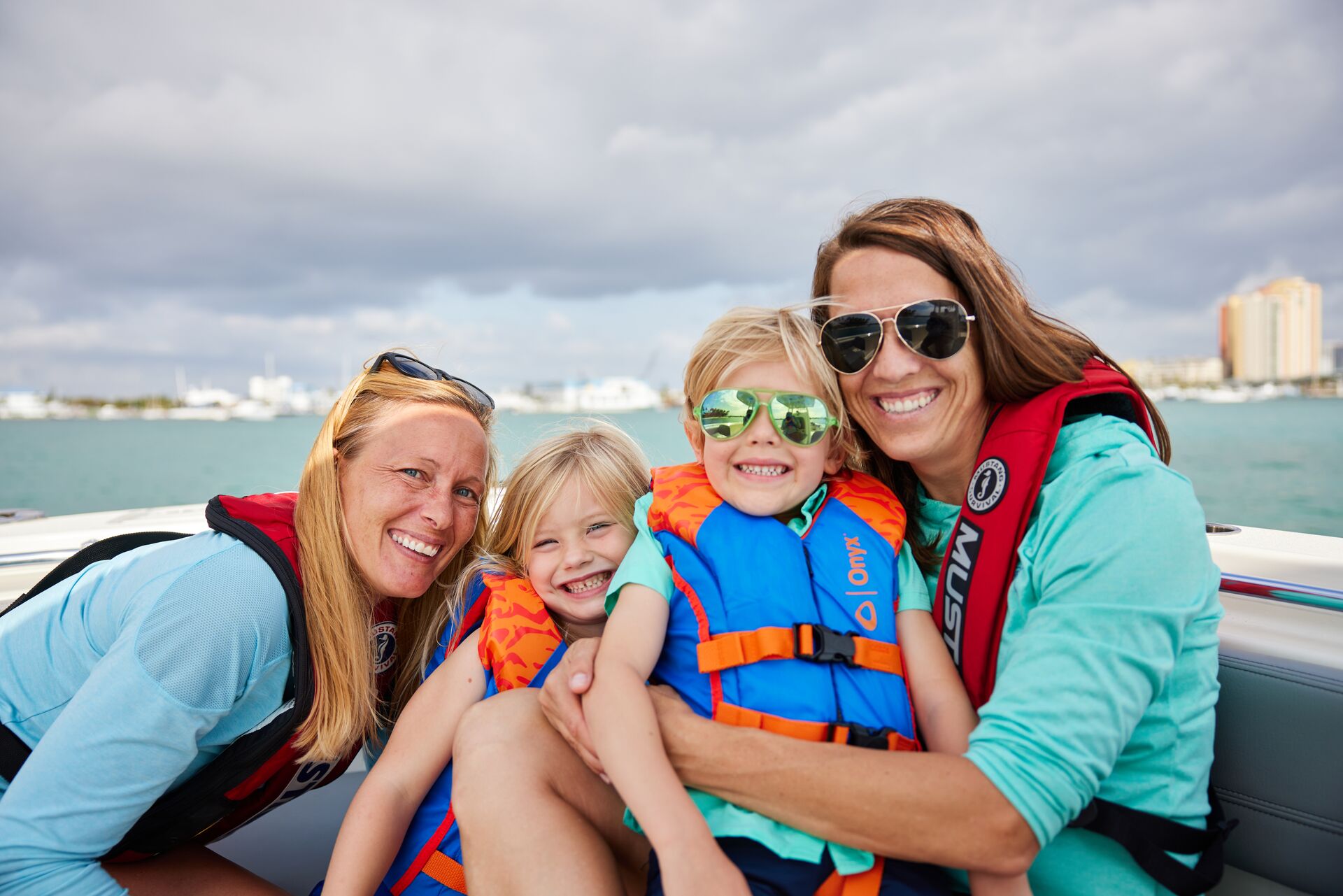
Always Wear a Personal Flotation Device on the Water
Even if you're not sure if you need one (or you're a strong swimmer), spending time on a boat, PWC (personal watercraft), or kayak without wearing a life jacket is dangerous.
PFDs are considered the most important piece of safety equipment for water enthusiasts. It's so essential that the U.S. Coast Guard (USCG) requires these devices to be carried on board all vessels.
Again, simply put: PFDs should be worn by everyone on a boat at all times.
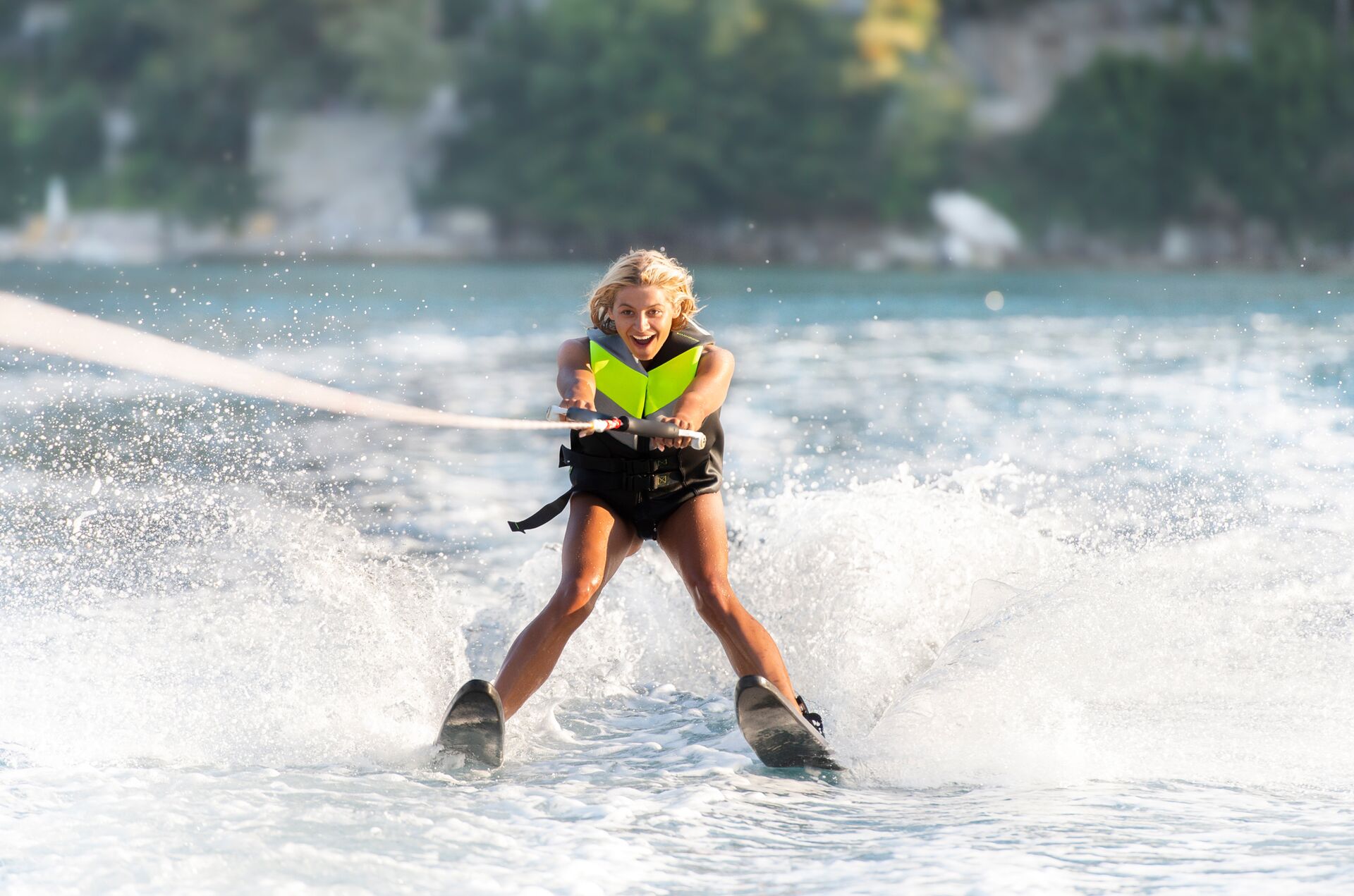
Which PFD is the Right One for Me?
Not all life vests are suitable for all adventures on the water. Depending on what you do — whether you're taking a leisurely cruise on the water or whipping around on a jet ski — one life jacket might be better for your activity than another.
It's also crucial to wear a life jacket that fits properly to give it the best chance of keeping you afloat in the water.
When choosing a PFD, make sure that it:
- Is USCG–approved
- Is appropriate for your location and activity
- Fits appropriately and has enough buoyancy to support you
Wearing the wrong size and type of life jacket could leave you in a dangerous situation with a PFD that can't help you as it should.
For example, a Type II life jacket may not provide enough support or keep you afloat long enough if you're in the water and far away from shore, where it could take a while for help to reach you. A Type I life jacket would be a better choice if you're boating or swimming in a remote area or open waters.
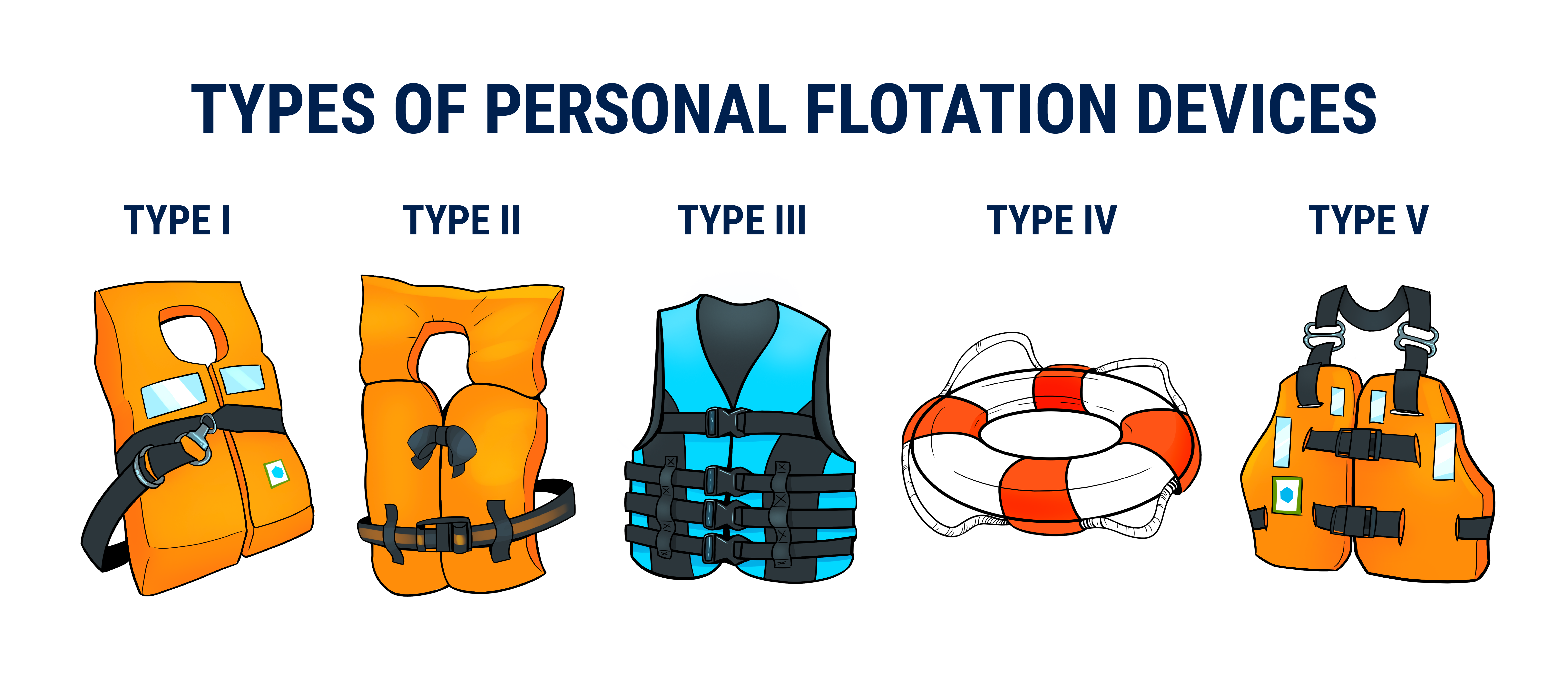
The 5 Types of Life Vests
What are the types of life vests, and when should you choose each one? Here's a brief overview of each one!
| PFD TYPE | BEST USE | DISADVANTAGES | BUOYANCY |
|---|---|---|---|
| Type I: Offshore Life Jacket | All water, especially open, rough, and remote waters, where rescue could be delayed. | Difficult to swim in due to large, awkward fit. | Adult size: 22 lbs. of buoyancy Child size: 11 lbs. of buoyancy Turns wearer face-up |
| Type II: Near-Shore Buoyant Vest | Calm, inland waters where there is a good chance of rescue. | May not turn unconscious wearers face-up. | Adult size: 15-1/2 lbs. of buoyancy Child size: 11 lbs. of buoyancy Infant size: 7 lbs. of buoyancy Will turn some wearers face-up |
| Type III: Flotation Aid | Calm, inland waters where there is a good chance of rescue. | Wearers must put themselves in a face-up position. | Same buoyancy as Type II |
| Type IV: Throwable Device | All waters where help is close by. | Intended for use in waters with heavy boat traffic. | Not designed to be worn; these are throwable devices. |
| Type V: Special-Use Device | Specific uses will be noted on the label. | Some are designed for cooler climates. Others are approved only when worn. | Some offer protection from hypothermia. |
While wearing "a" life jacket is better than not wearing one at all, it's ideal to understand each type of PFD and choose the best one for your water activities.
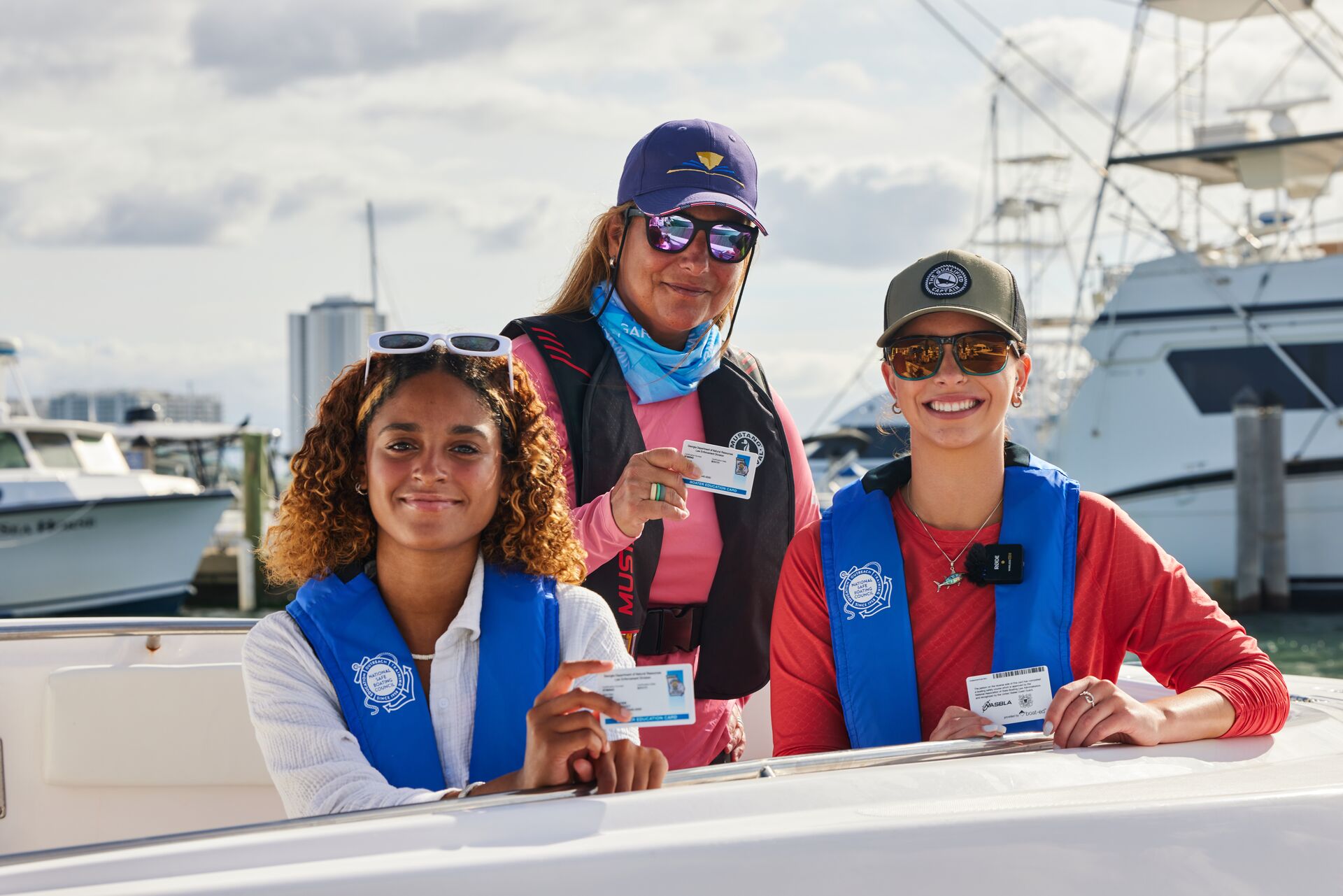
Learn More About PFDs and Boating Safety with ilearntoboat
The right live vests are the most important safety equipment to consider when heading out on a water adventure with friends or family. Everyone on board needs a well-fitting PFD that's the right type for what you have planned on the water for the day.
However, understanding life jackets is only part of the knowledge boat operators need to keep themselves and others safe on the water! Most states require boat operators to pass a boating education course and carry a boating license (or boater education card).
One of the best (and most fun) ways to learn what you need to know and get your card is by taking an online course through ilearntoboat! Our gamified learning experience makes it fun, easy, and fast to learn everything most states require boaters to know before operating motorized watercraft.
So, as you choose your life jacket and plan your next adventure, take time to take a boater safety course and get your license. Choose the ilearntoboat course for your state and start learning!
Originally published in 2021. Content most recently reviewed and updated for accuracy and relevancy November 8, 2024.

